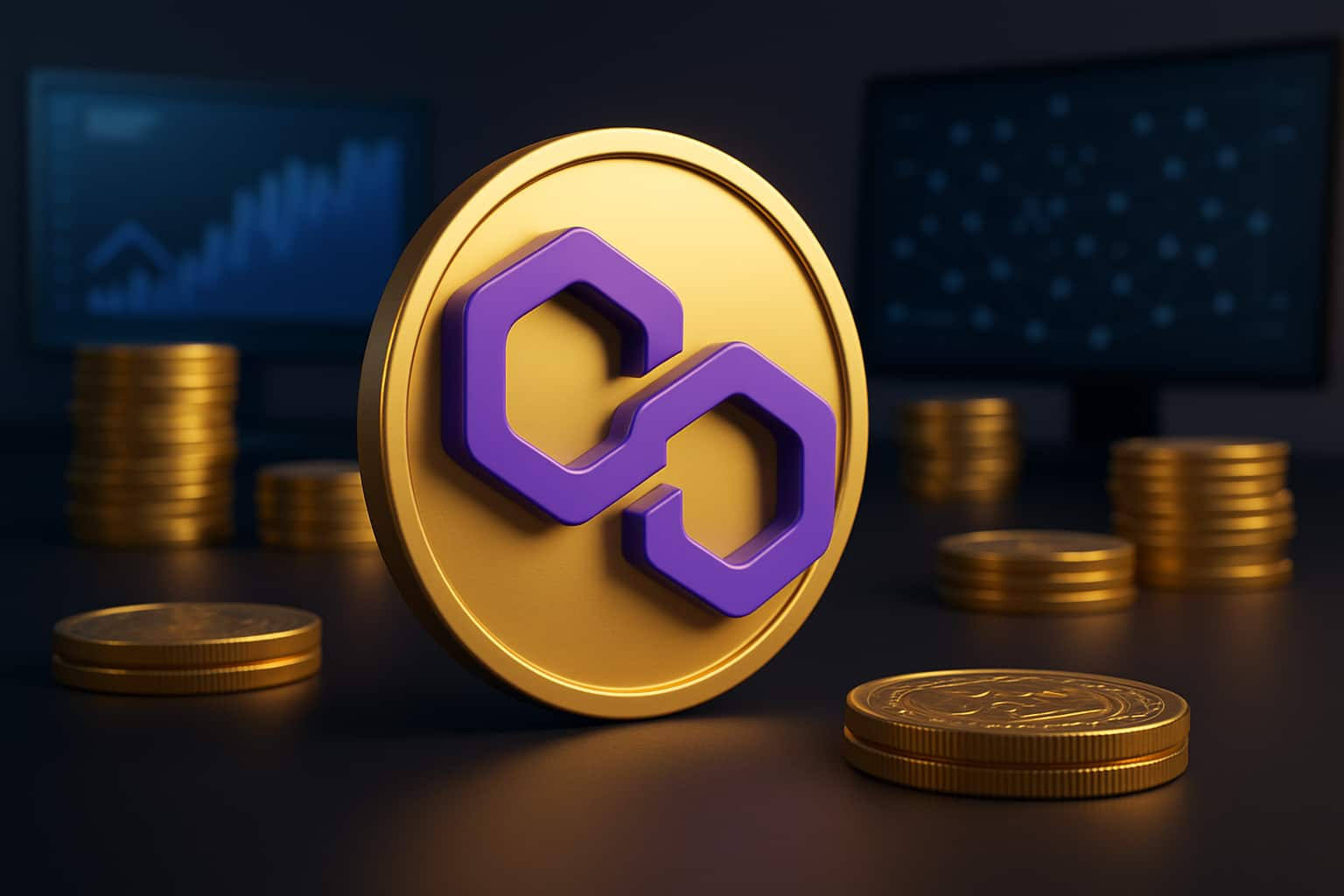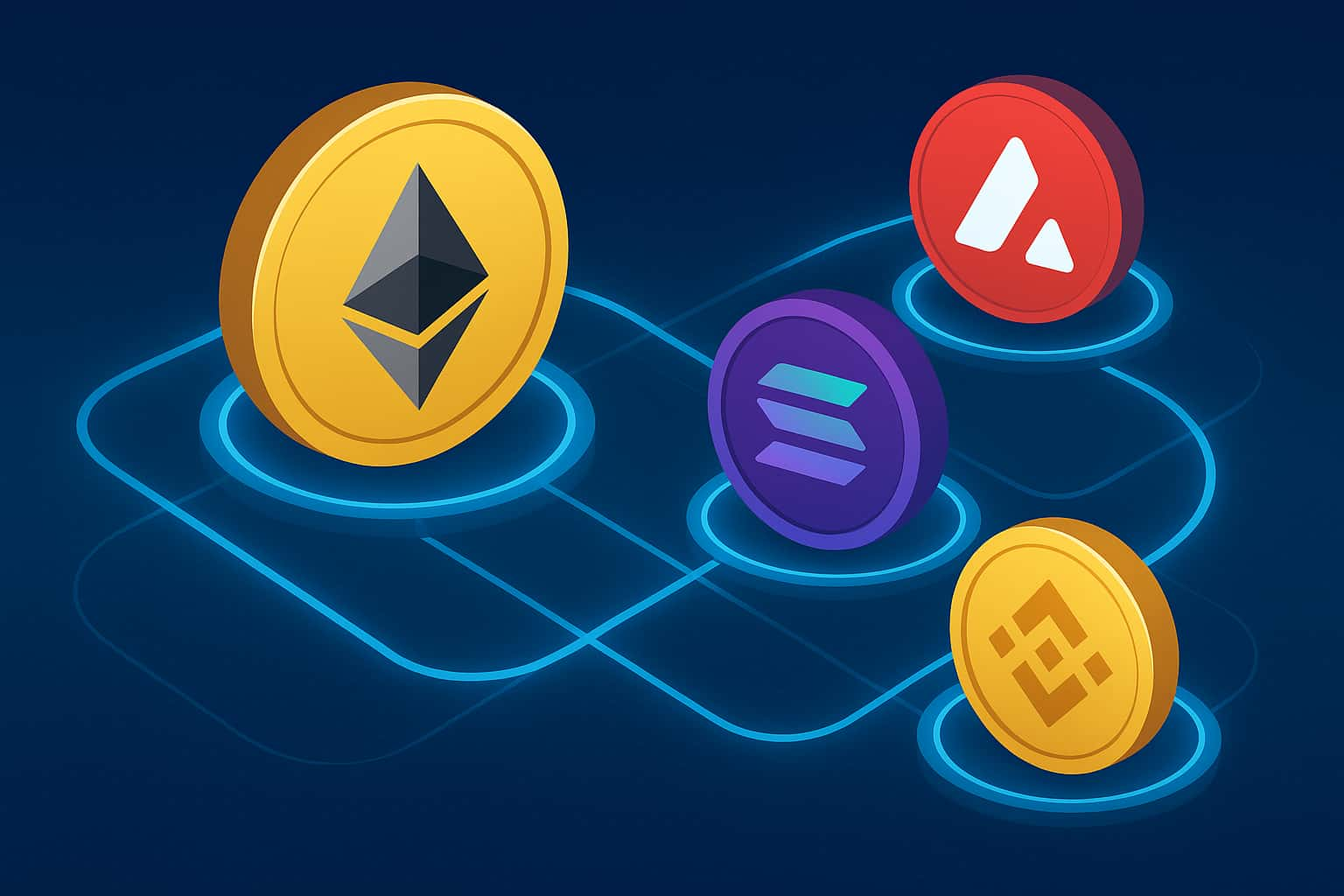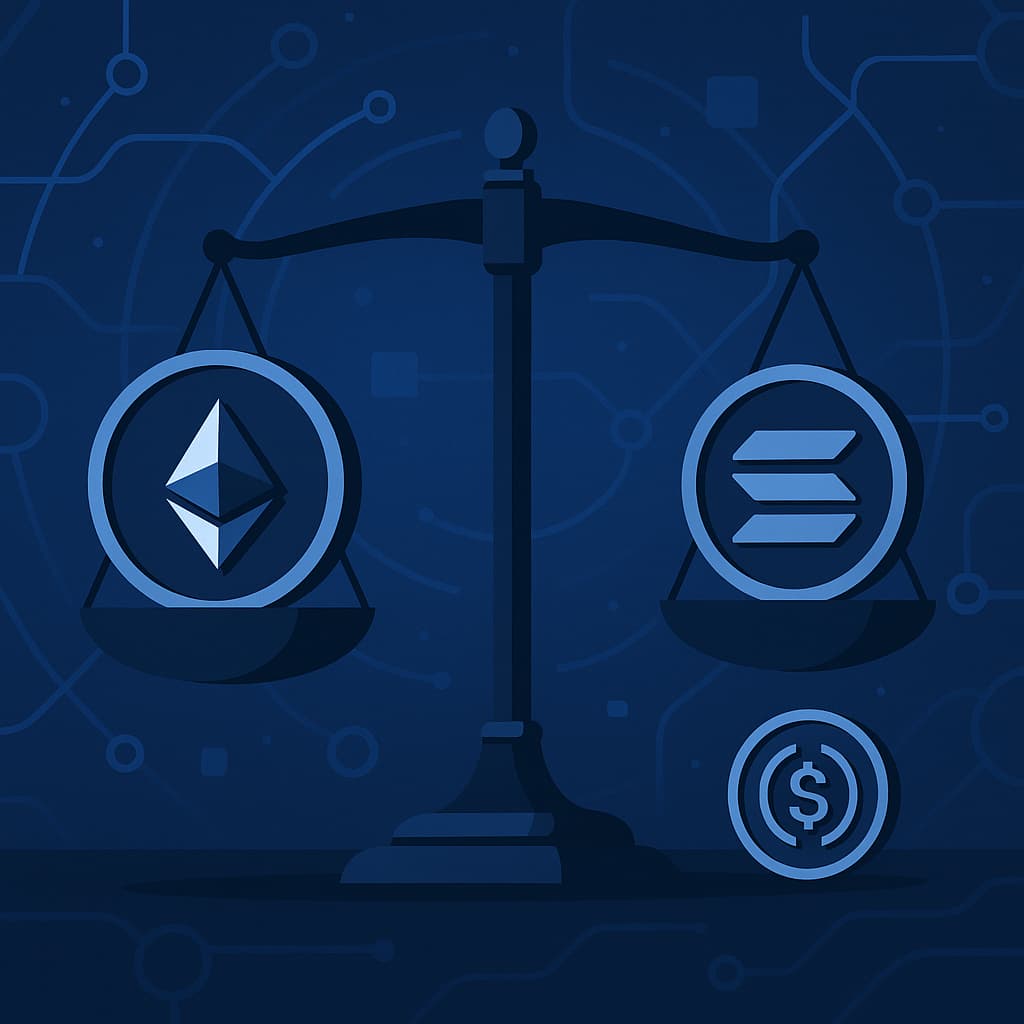-
In the rapidly evolving world of blockchain technology, the demand for scalability, security, and efficiency has led to the development of innovative solutions. Polygon, formerly known as Matic Network, stands out as one of the transformative blockchain app development platforms that addresses these challenges head-on. In this comprehensive guide, we delve into the intricacies of the Polygon blockchain, its technical architecture, key benefits, ecosystem, and the numerous ways it is reshaping the decentralized landscape for enterprises and developers alike.
Introduction
Blockchain has revolutionized the way data is stored, shared, and verified, but early networks like Bitcoin and Ethereum have faced significant hurdles in scalability and high transaction costs. Polygon emerged as a Layer 2 scaling solution for Ethereum, designed to overcome these limitations without sacrificing security or decentralization. Today, Polygon has evolved into a multi-chain system that empowers developers to build and scale decentralized applications (dApps) more efficiently.
Polygon's mission is simple: to transform Ethereum into a full-fledged multi-chain system (or Internet of Blockchains). This guide provides an in-depth look at how Polygon achieves this, why it matters for businesses, and how you can leverage its capabilities to drive next-generation digital transformation.
What is Polygon?
Polygon is a protocol and a framework for building and connecting Ethereum-compatible blockchain networks. Originally launched as Matic Network, Polygon rebranded to emphasize its broader vision of scaling and infrastructure development for Ethereum. At its core, Polygon offers:
- Scalability: By using sidechains and Layer 2 solutions, Polygon dramatically increases transaction throughput while reducing fees.
- Interoperability: It supports seamless interaction between multiple blockchain networks, enabling cross-chain communication.
- Developer-Friendliness: With full Ethereum compatibility, Polygon allows developers to use familiar tools like Solidity, Remix, Truffle, and Hardhat.
- Security: Polygon leverages a robust consensus mechanism and a network of validators to maintain high security standards.
Also, Check | How to Deploy a Smart Contract to Polygon zkEVM Testnet
The Evolution from Matic to Polygon
Initially, the Matic Network focused on providing a Layer 2 scaling solution for Ethereum by using Plasma framework and a proof-of-stake (PoS) consensus mechanism. Over time, the network expanded its vision, rebranding as Polygon to represent a broader ecosystem aimed at solving the scalability trilemma: achieving scalability, security, and decentralization simultaneously.
This evolution highlights Polygon's commitment to not only improving transaction speeds and lowering fees but also fostering an interconnected ecosystem where different blockchain networks can collaborate.
Technical Architecture of Polygon
Polygon's technical architecture is a layered framework designed to optimize scalability while retaining Ethereum's core principles. The key components include:
The Polygon SDK
The Polygon SDK is a modular and extensible framework that allows developers to build standalone blockchain networks that are fully compatible with Ethereum. It supports various consensus mechanisms and can be tailored to meet specific business requirements.
- Modular Design: The SDK's modularity means that enterprises can plug in different components as needed, such as consensus algorithms, data availability layers, and smart contract frameworks.
- Customizability: With a focus on customization, the Polygon SDK enables the creation of application-specific blockchains, ensuring that the network meets unique performance and security needs.
Layer 2 Solutions
Polygon integrates various Layer 2 scaling solutions to address the limitations of the Ethereum mainnet.
- Sidechains: Polygon's sidechains are independent blockchains that run in parallel to Ethereum. They handle transactions off-chain, reducing congestion and significantly lowering gas fees.
- Plasma Chains: Plasma is a framework that allows for the creation of child chains that bundle transactions and periodically commit to the main Ethereum chain. This reduces the load on the mainnet while maintaining high security.
- Rollups: Rollups batch multiple transactions into a single transaction on the Ethereum mainnet, further reducing costs and increasing throughput.
Consensus Mechanism
Polygon utilizes a Proof-of-Stake (PoS) consensus mechanism to secure its network. In this system:
- Validators: Stakeholders participate as validators who process and verify transactions. They earn rewards for securing the network, creating a strong economic incentive for honest behavior.
- Delegation: Token holders who do not wish to run validator nodes can delegate their tokens to trusted validators, thereby contributing to network security and earning a share of the rewards.
Interoperability and Bridges
Interoperability is a cornerstone of Polygon's architecture. The platform offers robust bridging solutions that facilitate the transfer of assets and data between Polygon and other blockchain networks, including Ethereum.
- Bridge Contracts: Smart contracts on both sides of the bridge handle asset transfers securely and efficiently.
- Cross-Chain Communication: Polygon supports protocols that allow different blockchains to communicate, enhancing the utility and reach of dApps built on its platform.
Also, Explore | How to Mint an NFT on Polygon using Ethers.js
Key Benefits of Polygon for Enterprises
Polygon is not just a technological solution; it's a strategic enabler for businesses looking to harness the power of blockchain. Here's how enterprises can benefit:
Scalability and Cost Efficiency
- High Throughput: With the ability to process thousands of transactions per second, Polygon addresses one of Ethereum's most significant limitations—scalability.
- Reduced Transaction Fees: By offloading transactions from the main Ethereum chain, Polygon drastically reduces gas fees, making microtransactions and high-volume operations economically feasible.
- Enhanced User Experience: Faster transaction speeds and lower fees translate into a better experience for end-users, driving higher adoption rates for dApps and blockchain-based services.
Enhanced Security and Decentralization
- Robust Validator Network: The PoS mechanism ensures that the network remains secure and decentralized. This is crucial for building trust among enterprise clients and end-users.
- Immutable Ledger: Like other blockchain platforms, Polygon provides an immutable record of transactions, which is essential for regulatory compliance, auditability, and data integrity.
- Flexible Security Models: Enterprises can choose the level of security that best fits their needs, balancing decentralization with performance.
Interoperability and Ecosystem Integration
- Cross-Chain Capabilities: Polygon's interoperability features allow businesses to integrate with multiple blockchain networks, enhancing the functionality of their dApps and enabling new business models.
- Legacy System Integration: With APIs and developer tools, Polygon can be integrated into existing enterprise systems, facilitating a smoother transition to blockchain-based operations.
- Expanding Ecosystem: As more projects build on Polygon, enterprises can tap into a growing ecosystem of partners, developers, and innovative solutions.
Developer and Community Support
- EVM Compatibility: Polygon's compatibility with Ethereum means that developers can leverage existing tools, libraries, and smart contract code, reducing development time and costs.
- Extensive Documentation and Resources: The platform offers comprehensive guides, tutorials, and SDKs, making it easier for developers to build, test, and deploy dApps.
- Vibrant Community: A thriving community of developers, validators, and enterprises supports Polygon, fostering an environment of continuous innovation and collaboration.
Also, Check | How Polygon AggLayer Emerges to be the Hub for Ethereum L2s
Use Cases for Polygon Blockchain
Polygon's versatile architecture lends itself to a wide array of applications across different industries. Below are some of the prominent use cases:
Decentralized Finance (DeFi)
DeFi platforms built on Polygon benefit from low transaction fees and high throughput. Use cases include:
- Lending and Borrowing Protocols: Secure and efficient lending platforms that enable peer-to-peer lending with minimal fees.
- Decentralized Exchanges (DEXs): High-speed trading platforms that support a wide range of assets and provide seamless liquidity.
- Yield Farming and Staking: Investment opportunities that allow users to earn rewards by participating in network operations.
Non-Fungible Tokens (NFTs)
Polygon's efficiency and cost-effectiveness have made it a popular choice for NFT marketplaces:
- Digital Art and Collectibles: Artists and creators can mint, trade, and sell NFTs with lower overhead costs.
- Gaming and Virtual Worlds: In-game assets and digital collectibles can be efficiently managed and traded, enhancing user experiences and engagement.
- Music and Entertainment: Tokenizing creative works to ensure transparency in rights management and revenue distribution.
Supply Chain and Logistics
Polygon's transparency and traceability are invaluable for supply chain management:
- Provenance Tracking: Ensuring the authenticity and origin of goods, from raw materials to finished products.
- Real-Time Monitoring: Enhancing visibility and reducing inefficiencies in logistics and inventory management.
- Secure Data Sharing: Facilitating collaboration between different stakeholders while protecting sensitive information.
Enterprise Resource Planning (ERP) and Data Management
Enterprises can integrate Polygon into their ERP systems to improve data integrity and operational efficiency:
- Immutable Records: Secure and tamper-proof data storage for audits, compliance, and reporting.
- Process Automation: Smart contracts automate complex business processes, reducing errors and operational costs.
- Interdepartmental Integration: Seamless data sharing across departments while ensuring data privacy and security.
Digital Identity and Authentication
Polygon offers a robust solution for digital identity management:
- Self-Sovereign Identity: Empowering users to own and control their personal data.
- Verification and Authentication: Secure identity verification processes that reduce fraud and enhance trust.
- Interoperable Identity Solutions: Facilitating cross-platform identity verification for financial services, healthcare, and government applications.
Also, Discover | Exploring Diverse Use Cases of Polygon Blockchain
Business Implications and Strategic Advantages
For B2B decision-makers, adopting Polygon offers several strategic benefits:
Competitive Edge
- Innovation Leadership: By leveraging cutting-edge blockchain technology, businesses can position themselves as innovators in their respective industries.
- Cost Savings: Reduced transaction fees and improved operational efficiency translate into significant cost savings.
- Scalability for Growth: The ability to handle high transaction volumes ensures that the platform can scale as the business expands.
Regulatory Compliance and Risk Management
- Transparent Audit Trails: An immutable ledger simplifies compliance with regulatory requirements.
- Data Security: Robust security features help mitigate risks associated with data breaches and cyberattacks.
- Customizable Solutions: Enterprises can tailor the blockchain environment to meet specific regulatory and operational needs.
Enhanced Customer Experience
- Faster Transactions: Improved speed and lower fees enhance the overall user experience, driving higher customer satisfaction.
- Trust and Transparency: The transparency of blockchain builds trust with customers and partners, essential for long-term success.
- Innovative Offerings: New business models and digital services can be developed on Polygon, providing additional value to customers.
Implementation Considerations
Implementing a blockchain solution on Polygon involves several strategic and technical considerations:
Define Business Objectives
- Assess Needs: Clearly identify the specific challenges your organization faces that blockchain technology can address.
- Set Goals: Establish measurable objectives, whether it's reducing transaction costs, enhancing security, or improving customer experience.
Choose the Right Development Tools
- EVM Compatibility: Leverage Ethereum-based development tools such as Solidity, Remix, Truffle, and Hardhat.
- SDKs and APIs: Utilize Polygon's developer resources for seamless integration with existing systems.
- Testing Environments: Deploy testnets to experiment with new applications before a full-scale rollout.
Design a Scalable Architecture
- Modular Approach: Build using a modular architecture that can be scaled and adapted as business needs evolve.
- Interoperability Focus: Ensure that your solution can interact with other systems and blockchain networks to maximize utility.
- Security Measures: Incorporate multi-layered security protocols, including encryption, access controls, and regular audits.
Engage Stakeholders
- Internal Training: Educate your team on the benefits and functionalities of Polygon.
- Partnerships: Collaborate with blockchain experts, technology partners, and consultants to ensure a smooth implementation.
- Community Involvement: Engage with the broader Polygon community to tap into shared knowledge and best practices.
You may also like | Polygon zkEVM | For Efficient Scalability of Your dApp
Future Trends and Outlook for Polygon
Polygon continues to innovate, and several emerging trends point to its growing relevance:
- Expansion of the Ecosystem: As more dApps and enterprise solutions adopt Polygon, the network effect will drive further innovation and increased liquidity.
- Enhanced Interoperability: Future developments are expected to further improve cross-chain capabilities, making Polygon a central hub for multi-chain integration.
- Sustainable Development: With a focus on energy efficiency, Polygon is likely to play a significant role in driving sustainable blockchain practices.
- Institutional Adoption: Increasing interest from institutional investors and enterprises will further validate Polygon's position as a leading blockchain scaling solution.
- Regulatory Evolution: As regulatory frameworks mature, Polygon's flexible architecture will enable businesses to quickly adapt to new compliance requirements.
Frequently Asked Questions (FAQ)
Q1: What is Polygon, and how is it different from Ethereum?
A1: Polygon is a Layer 2 scaling solution and a framework for building Ethereum-compatible blockchain networks. It addresses Ethereum's scalability issues by utilizing sidechains, Plasma, and rollups, resulting in faster transaction speeds and lower fees while maintaining compatibility with the Ethereum ecosystem.Q2: How does Polygon improve transaction speed and reduce costs?
A2: Polygon processes transactions on its sidechains and Layer 2 solutions, which are less congested than the Ethereum mainnet. This offloading of transactions results in higher throughput and significantly reduced gas fees.Q3: What are the key components of Polygon's architecture?
A3: The key components include the Polygon SDK for building customizable blockchain networks, various Layer 2 solutions (sidechains, Plasma chains, and rollups), a Proof-of-Stake consensus mechanism, and interoperability bridges that connect Polygon with Ethereum and other blockchains.Q4: Can developers easily migrate their existing Ethereum dApps to Polygon?
A4: Yes, Polygon is fully EVM-compatible, meaning that developers can use familiar Ethereum development tools and languages (like Solidity) to deploy and manage their dApps on Polygon with minimal modifications.Q5: What are some common use cases for Polygon in the enterprise space?
A5: Common use cases include decentralized finance (DeFi) applications such as lending platforms and DEXs, NFT marketplaces, supply chain management, digital identity verification, and enterprise resource planning systems.Q6: How secure is the Polygon network?
A6: Polygon leverages a Proof-of-Stake consensus mechanism, a robust validator network, and advanced security protocols to ensure that the network remains secure, decentralized, and resistant to attacks.Q7: How can businesses get started with Polygon?
A7: Businesses should begin by reviewing Polygon's extensive documentation and developer guides, set up their development environment using tools like Remix and Hardhat, and consider piloting a small-scale project to evaluate the platform's performance before a full-scale rollout.Conclusion
Polygon represents a significant advancement in blockchain technology, offering a scalable, secure, and cost-efficient solution that bridges the gap between high-performance enterprise applications and decentralized innovation. By leveraging Polygon's robust Layer 2 solutions, enterprises can overcome the limitations of traditional blockchains, achieve greater operational efficiency, and drive transformative digital strategies.
Whether you are a developer seeking to build next-generation dApps or an enterprise looking to integrate blockchain into your business operations, Polygon provides the infrastructure, tools, and ecosystem support to turn your vision into reality. As the blockchain landscape continues to evolve, adopting Polygon can give your organization a competitive edge in an increasingly interconnected digital world.
Embrace the future of decentralized innovation with Polygon—a platform designed to empower businesses, enhance user experiences, and drive the next wave of blockchain adoption.
Note: This article provides an in-depth technical and business overview of Polygon. For tailored advice and further consultation on how to integrate Polygon into your enterprise strategy, consider engaging with blockchain experts and specialized technology partners.

Our Offices
INDIA
Emaar Digital Greens, Sector 61,
Gurugram, Haryana
122011.
Welldone Tech Park,
Sector 48, Sohna road,
Gurugram, Haryana
122018.















